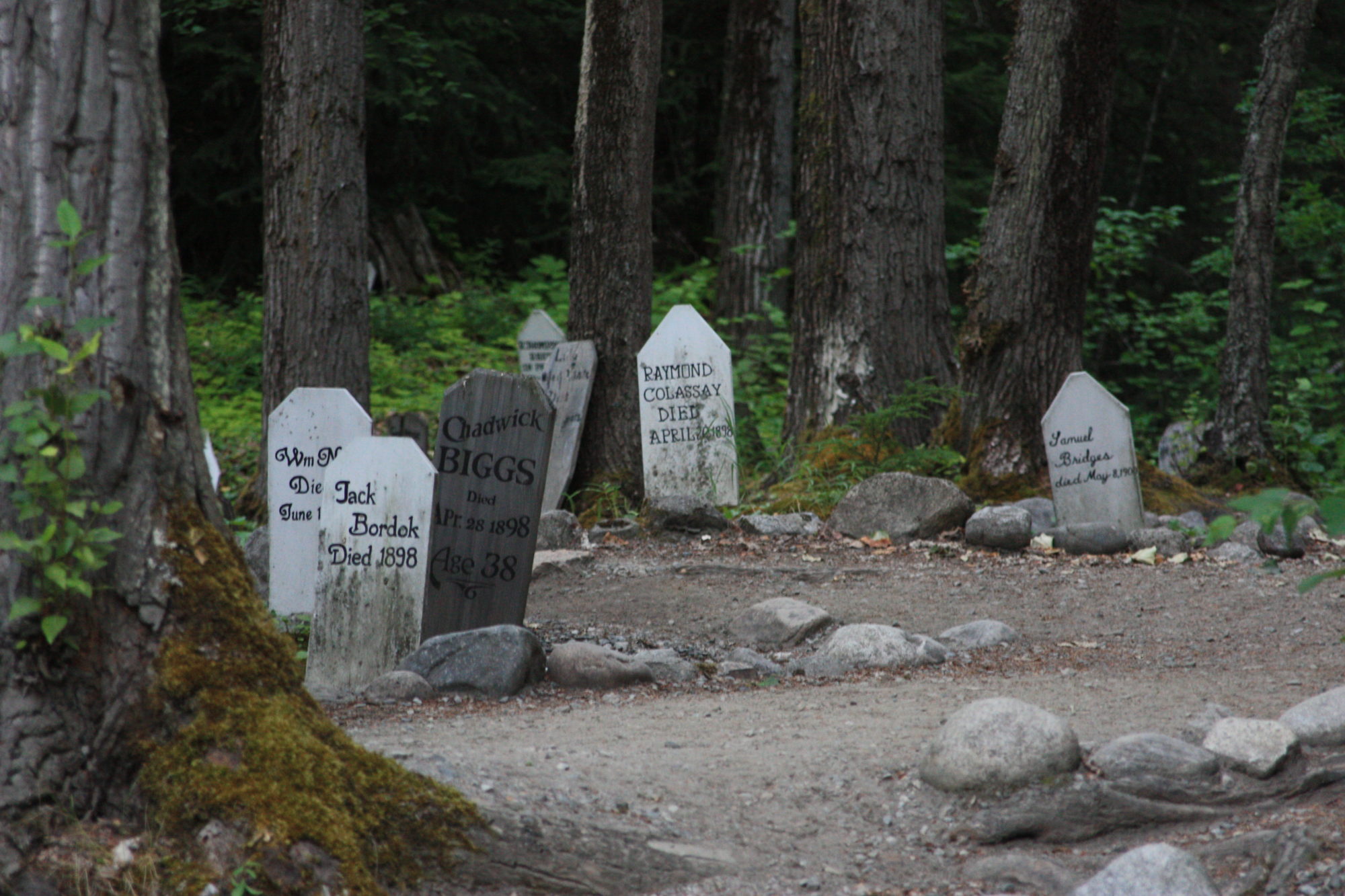
In January 1945 Della Murray Banks wrote an article in the Alaska Sportsman Magazine about her work on the Dalton Trail. She and her husband Austin Banks had made previous trips to the Chilkat area – in 1896 she was burned at Cook Inlet and lost two fingers on her left hand.
Back in Seattle, in 1898, they were hired by Denison Tucker and the infamous Homer Pennock to lead them to the Klondike on the Dalton Trail. Early on Mrs. Tucker and her sister Mrs. Hutchins decided to stay behind in Seattle so that they would not get their feet wet. (They also could not cook or eat off of tin plates).
In July 1898 the party of about 10 people arrived in Skagway to see the town under martial law following Soapy’s death and subsequent goings-on. Della and her husband went over to Pyramid Harbor to stay instead. They found the English proprietor of the hotel celebrating the Santiago victory. Tucker hired two packers, Jack Noon and Tom McAvoy (who died on today’s date, December 16, 1918).
They used a couple of horses, Polly and “Swift”. They found a mule bit for the horse along the way, and near the summit of the Chilkat Pass, they traded that for a regular bridle found hanging in a tree. By the time they arrived at Dalton Post, Della was riding on a fine saddle and with good bridle, both acquired from the dead animals they passed along the way!
Della cooked on the trip and they paid her $50 a month. In the photo above she is cooking supper, as she puts it, “for our famished outfit. Each meal required ninety biscuits, which I could bake fifteen at a time in our sheet-iron stove. My knees became calloused from kneeling on the rough ground, kneading dough and making biscuits. Conveniences? There were none.”
Would you do this for $50 a month?
Apparently she did not even get that, as the consummate con man, Homer Pennock swindled Mr. & Mrs. Banks. The town of Homer was named by Della Murray Banks, (the first white woman in Homer) before she realized that she and her husband had been swindled. The name stuck, but Della and Austin did not stick around.
collection of her letters are at the Bancroft Library at the University of California, Berkeley; The Homer Spit, Coal, Gold and Con Men, was
written by Janet Klein, and published in 1996









